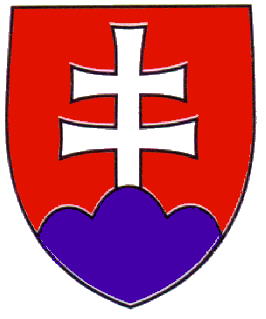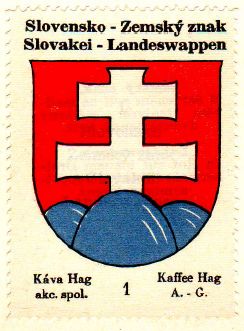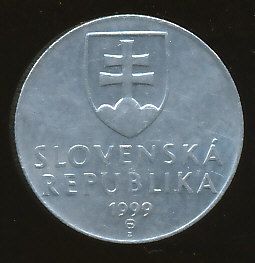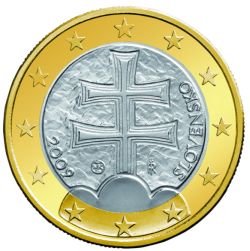National Arms of Slovakia
NATIONAL COAT OF ARMS OF SLOVAKIA
Official blazon
Origin/meaning
The arms were officially adopted on January 1, 1993.
The arms of Slovakia show a double cross on a triple mountain.
The double cross is a symbol of Christianity and the hills represent the three symbolic mountain ranges: Tatra, Fatra and Mátra (the last now partly in Hungary).
The double cross probably arrived in present day Slovakia by the Byzantine missionaries St. Cyril and Method. The first official use dates from the arms of the Hungarian King Bela III (ruled 1173-96), who used a silver double cross on a red shield. Already in the 14th century the cross was used standing on a triple mountain.
The double cross was mainly seen as the symbol for the Northern part of the Hungarian Kingdom, which is now Slovakia and several towns in Slovakia were granted arms with a double cross during the 14th-16th century (for example Nitra, Skalica and Zvolen).
In the 19th century, when the struggle for Slovak independence developed, the green hills, as used in the Hungarian arms were replaced with blue hills and the meaning was changed to the mountain ranges, which were considered the Slovak lands. It was first used in 1848 by the Slovak National Association in Vienna.
In 1918 Slovakia became part of the new Czechoslovak Republic. In the new arms of Czechoslovakia, Slovakia was represented by the cross and blue hills. See also National arms of Czechoslovakia.
During the first Slovak Republic (1939-1945) the arms became the national arms. In 1945 when Czechoslovkia was restored, Slovakia was represented first by the old arms, and from 1961-1989 by a flame.
After the independence in 1993, the now historical arms were restored.
| The arms in the Coffee Hag albums +/- 1930 | |
| The arms on a coin from 1999 |
The arms a Slovak Euro coin |
Contact and Support
Partners:
Your logo here ?
Contact us
© since 1995, Heraldry of the World, Ralf Hartemink 
Index of the site
Literature : Kartous and Vrteľ













